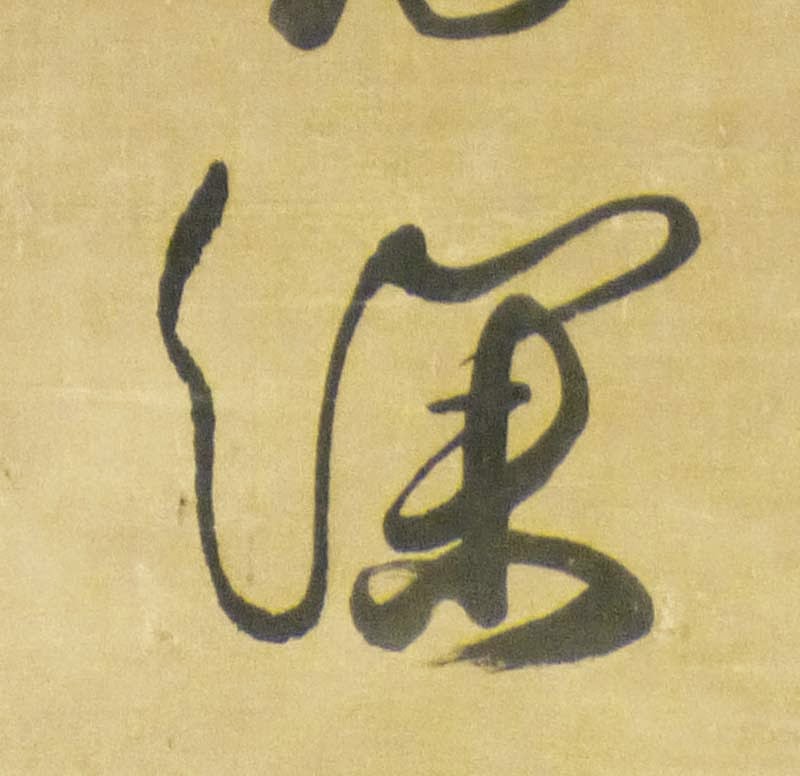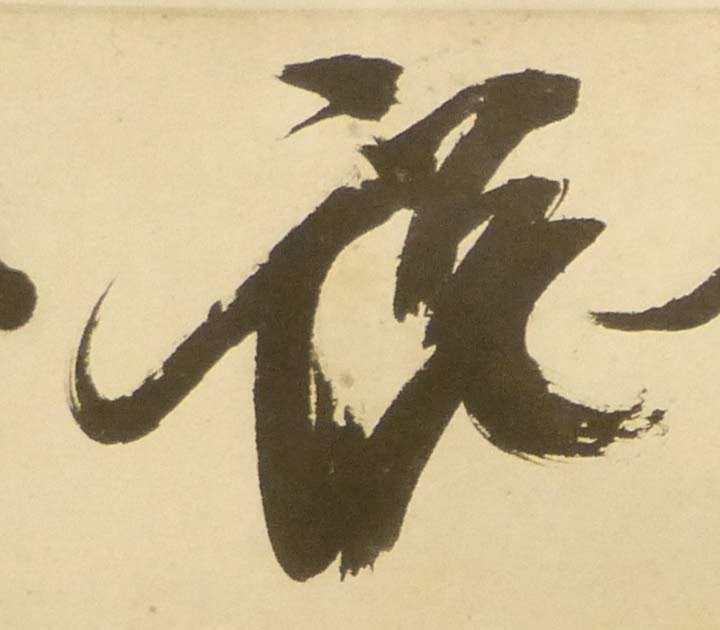Calligraphy at the Met
Wang Duo (1592-1652), 1635
Jerry Yang, one of the founders of Yahoo, has been a serious collector of historical Chinese calligraphy, collaborating with experts to identify the most important pieces that come on the market.
Many of their selections are now on view at the Met, in a quite extensive display
All the basic styles are represented. Possibly the most important piece is the 30-foot "Lotus Sutra" by Zhao Mengfu (1254-1322).....but it's 15,000 characters are too formal, staid, and small for my 21st century appetite.
And perhaps the same could be said for the appetite of Jerry Yang -- because so much of the calligraphy in this show is wild, free, and crazy -- like the example shown above.
This exhibit has been titled : "Out of Character: Decoding Chinese Calligraphy" -- but it might better have been called "Strange Characters of the late Ming Dynasty" -- because so much of the work is from that era, and it's so eye-catching for contemporary eyes.
Sometimes Wang Duo lets the ink bleed into the surface, making for some very funky shapes that contrast so nicely with the sharp edges found elsewhere.
I've seen plenty of wackiness in Chinese calligraphy before -- but this passage seems to have cranked it up to another level. It feels so free and fanciful - while still controlling the negative spaces.
This reminds me of my young niece practicing Tae Kwon Do in a children's park in Brooklyn last weekend.
This seems to be some kind of spring-loaded Rube Goldberg machine - where flipping a small switch at one end results in a more dramatic movement at the other.
Huang Daozhou (1585-1646)
This guy is much more elegant - even floral.
But despite the delicacy of his work, Huang spent some time in jail and later died on a battle field.
Shao Bao (1460-1527)
There's a stately, poised Classicism about these characters. He may have been on the other side of the planet, but he does seem to share the same timespace as his contemporary, Raphael.
Wen Zhengming (1470-1559), Poem (1553)
Here's another contemporary who was born before and died after Raphael.
This piece was done when the artist was 83 years old!
Here's a translation of the poem he has lettered.
Wen Peng (1498-1573) - Thousand Character Classic (1561)
Gallery signage tells us that the clerical script used above was unusual for its time.
To me, it feels like the lettering now used to announce sale items on the windows of fruit and vegetable stores.
This one looks like the cartoon portrait of an unhappy old man.
Fu Shan (1607-1684)
Gallery signage tells us that the artist asserted that:
“Better awkward than clever, better ugly than charming, better fragmented than slick, better straightforward than calculating,”
Though that might better apply to work far less elegant than his.
The poem reads:
Taking things easy in old age, I shun all worldly engagements,
And sleep day alter day behind the lightly shut doors of my rustic home.
But then deep feelings stir up attachments;
A red lotus blossoms in the rain.
Wang Duo, "Poem on a River Sojourn", 1645
Here's another piece by Wang Duo (1592-1652), a high Ming official who lived in "interesting times". In 1644 the imperial army, faced with both Manchu invasion and multiple peasant and soldier revolts, disintegrated, leaving the last emperor to go hang himself.
Perhaps those turbulent events accounts for these wild characters.
Xiong Tingbi (1569-1625)
Here's another calligrapher who lived during the tumultuous end of the Ming Dynasty.
But as the martial feeling in his brushwork might suggest, he was a soldier on the northern frontier.
Regretfully, he was accused of treason and executed.
This one feels especially martial
Ni Yuanlu (1593-1644)
The poem reads:
The reflection of the bridge looks like a long piece of silk;
The fat toad taunts the skinny coil.
After ten mountains, there appears a stream;
Buddhists to the east, butchers to the west
Stalks of bamboo Invite clouds to be their guests;
Flowers entrap butterflies, making them their captives.
Lovely Is the scent of wine walling from the shop!
Fortunately I still have three coins on me.
Another high official from the waning years of the Ming, Ni Yuanlu committed suicide when the dynasty fell.
Wang Duo, 1650
It appears that this collector is a big fan of Wang Duo - and so am I.
The characters seem to be aware of each other on the page
This detail depicts one of my typical days.
Dong Qichang (1555-1636)
An extensive entry on Wikipedia tells us that Dong Qichang had a more turbulent life than this calligraphy might suggest. His landscape paintings , however, do appear to be more expressive of strong emotions.
Huang Hui (1559-1612), Poem on Climbing Mt. Qile, 1609
Yet another late Ming poet, Huang Hui was a friend of Dong Qichang.
Don Qichang, "Poem of Wang Wei in the style of Mi Fu", 1611
Here's an example of Mi Fu (1051-1107).
I've written about him earlier
Deng Shiru (1743-1805), "Climbing the Eastern Marchmount", 1790
Deng Shiru was noted for the revival of seal script - and the study of ancient inscriptions in stone.
Gao Fenghan (1689-1749?), poem, 1744
Known as an eccentric landscape painter, Gao Fenghan's right hand was injured during the year he spent in prison (was he tortured ?), and subsequently painted with his left.
His characters settle gently down into the page, rather than erupting out from it.
He Shaoji (1799-1873), Stele of Ritual Implements, 1869
original Stele on Ritual Implements, AD 156
The epigraphic school of calligraphy based their work on ancient stone inscriptions, like the one above which He Shaoji has transcribed.
Reminds me of Miro.
Here's a detail from a He Shaoji scroll that was recently sold at auction
Why doesn't my museum (the Art Institute of Chicago) buy this kind of thing?
Currently, it's quite affordable.
( This piece sold for $5,186)
Why doesn't my museum (the Art Institute of Chicago) buy this kind of thing?
Currently, it's quite affordable.
( This piece sold for $5,186)





































































































0 Comments:
Post a Comment
<< Home